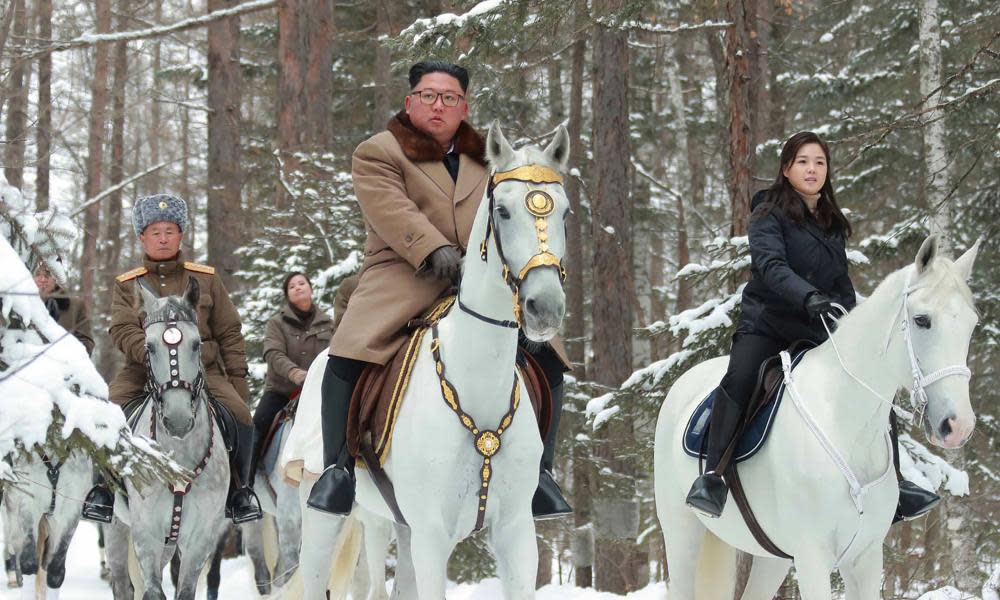The Guardian view on North Korea: a brewing nuclear crisis

North Korea often appears to have styled itself upon a James Bond adversary. We have seen the dramatic announcement of a deadline (New Year), followed by the arch threat that “it is up to the US what Christmas gift it will choose to get”. (Experts predict a missile test.) Its fondness for baroque menace is matched by its flair for provocation – Sunday saw the announcement of a “very important” test at its Sohae site, which the US said it had agreed to destroy. A flurry of pictures of Kim Jong-un mounted on a white horse, at the sacred site of Mount Paektu, surely herald, according to state media, “a great operation to strike the world with wonder again”. The theatricality is intentional: Pyongyang wants international attention. It should also be taken seriously. The North walked out of talks in October, frustrated that there is no sign of sanctions relaxation. The White House has reminded people that the US could use force and described Mr Kim as “Rocket Man” again – and warned he had “everything to lose”.
It would be easy to mistake this for another instalment in a predictable series. But it is only half true to say that we have been here before. Donald Trump’s threats of “fire and fury” followed by a charm offensive (“we fell in love”) have not merely failed to resolve the underlying problem; they have made a bad situation worse. He claimed progress by pretending there was no difference between something Pyongyang would not object to (multilateral denuclearisation of the peninsula) and something it would never agree to (complete unilateral denuclearisation). This was not a solution; only an illusion of progress.
North Korea would rather deal with Mr Trump than another US president, creating a certain sense of urgency; and it appears unconcerned by the possibility of US action, given its wooing of Mr Trump, his lack of concern at its short-range missile tests, and the fact that he shows little appetite for matching action with rhetoric elsewhere. It has continued to develop and refine its arsenal. Mr Trump’s affections have ensured that (previously disdainful) Beijing has embraced Pyongyang. And the North has noted his disregard for Seoul and Tokyo; he is demanding the US allies pay vastly higher contributions to maintain bases and troops. Little wonder Pyongyang treats South Korea’s president, Moon Jae-in, so casually.
The South has plenty of reason to reconsider its nuclear-free status, which rests upon two factors: the belief that the threat from the North can be reduced, and that the US will defend it anyway. Zoom out and the bigger picture is still grimmer, taking in the end of the Intermediate-range Nuclear Forces treaty, and the expectation that New Start may go the same way; the Trump administration’s efforts to finish off the Iran nuclear deal; and the US export of nuclear technology to Saudi Arabia. “Will we look back at 2019 as the year where we allowed the new nuclear age to emerge?” asks one analyst. North Korea wants to prod the US into concessions, not provoke it into conflict. But the risk of misunderstandings and misjudgments are real. The North Korean military chief has warned that the truce with the US “can turn into an all-out armed conflict any moment even by any accidental case”. This was another threat, of course. But it has a sad truth in it.


